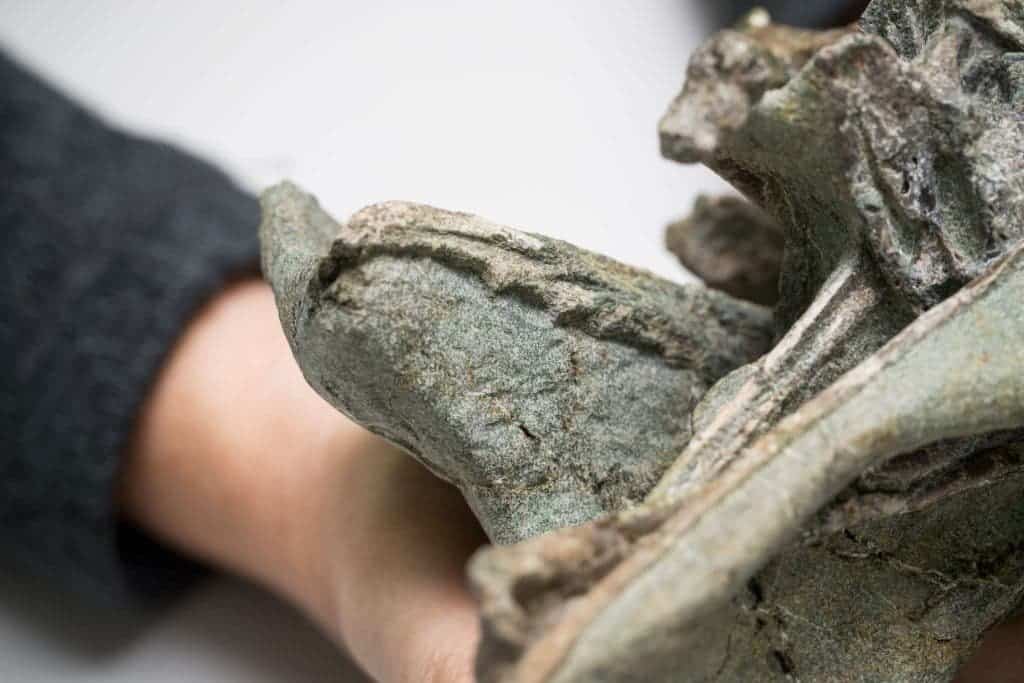A fossil discovered in Waipara, North Canterbury, New Zealand sheds light on the evolution of modern birds.

Image credits Canterbury Museum.
At 62 million-years-old, the newly-discovered species was christened Protodontopteryx ruthae, is one of the oldest known bird species in the world. It lived in New Zealand soon after the dinosaurs died out. This species is among the largest flying birds ever discovered and is the ancestor of many birds today.
Big, ancient, toothy bird
“While this bird was relatively small, the impact of its discovery is hugely significant in our understanding of this family” says Canterbury Museum curator Dr. Paul Scofield, paper co-author.
“Until we found this skeleton, all the really old pelagornithids had been found in the Northern Hemisphere, so everyone thought they’d evolved up there.”
Pelagornithids, or bony-toothed birds, are an ancient family of seafaring birds. Previously, it was assumed that they evolved in the Northern Hemisphere, but the new species suggests this isn’t at all the case. P. ruthae is the oldest and smallest member of the family, the team explains, hailing from around 62 million years ago. It’s also one of the earliest species of birds ever found.
While later pelagornithids grew very large, being some of the largest flying birds ever to roam the Earth — some boasted wingspans in excess of 5 meters — P. ruthae was only about as large as a seagull. Still, like the rest of its family, it had bony, tooth-like projections on the edge of its beak.
The fossil was discovered by the same team that recently described a 1.6 meter-high penguin found at the same site. A partial skeleton belonging to the new species was found last year at the Waipara Greensand fossil site by amateur paleontologist Leigh Love, who named it after his wife Ruth. Researchers from the Canterbury Museum and the Senckenberg Research Institute and Natural History Museum in Frankfurt helped prepare and describe the fossil.
Based on the age of the fossilized bones, Dr. Scofield says the bird likely evolved in the Southern Hemisphere. The team says that the fossil is “one of the most complete specimens of a pseudotoothed bird” ever found and that it shows a number of features we didn’t know about — all of which will help better our understanding of bird evolution over time.
Protodontopteryxs’ skeleton suggests it was less suited for long-distance soaring than later pelagornithids and probably covered much shorter ranges. Its short, broad pseudoteeth were likely designed for catching fish while later species had needle-like pseudoteeth which were likely used to catch soft-bodied prey like squid. The last pelagornithid species died out around 2.5 million years ago, just before modern humans evolved.
“New Zealand was a very different place when Protodontoperyx were in the skies. It had a tropical climate—the sea temperature was about 25 degrees so we had corals and giant turtles,” Dr. Scofield adds.
The Protodontopteryx fossil will be displayed alongside other discoveries from the Waipara Greensand site in an exhibition about ancient New Zealand at the museum later this year.
The paper “Oldest, smallest and phylogenetically most basal pelagornithid, from the early Paleocene of New Zealand, sheds light on the evolutionary history of the largest flying birds” has been published in the journal Papers in Paleontology.






